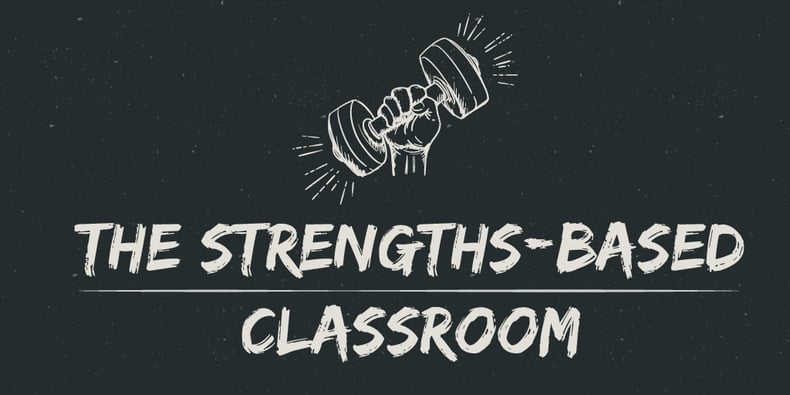
In 1999, an influential leadership and management book called First Break All the Rules was published—if you are a leader of an organization in any capacity, I would recommend it. I see all of my teachers as teacher leaders, so if you are a teacher, you should take a look. The follow-up book, Now Discover Your Strengths, is just as profound.
Many books cite research to support their claims, and these two books also have research—plenty of it. The power of this particular research comes in two forms: The sheer number of participants in the surveys and the diversity of the sample set, which give the research very broad appeal. They asked leaders and managers of all different levels and industries the same setup questions about engaging employees and creating teams. Regardless of the type of career field you are in, the findings are relevant.
Focus on Your Strengths
Now Discover Your Strengths validates what we attempt to do in education and challenges us to do it better. Our hope in schools is to help students grow to be successful and engaged employees. The findings of the book help us understand how to build this and how to incorporate it into our current schools. There is even a section on the role of education and teachers, even though this isn’t an education book per se.
Here is a brief summary of the findings: Individuals see and feel the most growth in their lives in areas that they are the most successful and have the most natural strengths. As opposed to investing time in “fixing” or improving our weaknesses, we should be doing what we do best more and more. We first have to know what we are good at and what our strengths are—once we know this, we can invest in them through time, resources, and training. The outcome, the researchers found, was extremely high levels of growth in these areas as opposed to little to no growth in the areas that aren’t as strong. For our “weaknesses,” we have to find ways to manage around them rather than ignoring them. But to spend great amounts of time to improve them isn’t worth the investment.
As a teacher, know your strengths:
- How do you do this? If this is something you have never thought much about, take a few minutes to reflect. What you are really good at? What do you love to do? How do you organize best? These questions help lead us to our strengths. The book Flow by Mihaly Csikszentmihalyi touches on finding these areas that we feel strongest about and have a sense of full engagement and immersion in. Be sure to check out his TED talk, which is also really great.
- How do you improve from this knowledge? Try developing yourself professionally in this area this year. Too often, I have teacher say to me, “I’m just not really good at X, so I would like to go to a workshop on it.” To play to your strengths, go to a workshop or seek out training opportunities in an area you excel at, making yourself even better.
As a student, know your strengths:
- How can this help you as a student? This comes down to confidence. If a student struggles with an important academic area—like math or reading—they can feel like a failure day after day. If they know their strengths, it will help to boost their confidence in the classroom.
As a teacher, know your students’ strengths:
- How can this help the teacher? As a teacher, you can gear projects or instruction to the different strengths of the students. It can be a great way to really celebrate each individual as they grow in your classroom.
- How can this help the students? This is one of the important steps to students thinking about their future. They should ask themselves, “What am I really good at?” and then work from there to think about what their future could look like. Don’t forget to share this insight with parents—they should understand strengths and how to help their students improve and grow. The teacher can help them with this process.
If you have never delved into the research provided by Gallup over the past 10–15 years about personal strengths, it is worth reading. As a school, the StrengthsQuest is a great tool to address this for all students. If you are new to this, or just want to improve yourself or your staff, the Teach With Your Strengths book is a great professional development starting point. The StrengthsFinder 2.0 will allow you to take the survey to discover your strengths, and then has ideas for improving in all of the different areas.
Hopefully these resources help you to develop a “strong” classroom full of learners growing to meet their full potential. Looking for more ideas to help your students grow and achieve their classroom goals? Subscribe to our Mimio Educator blog today!



